|
GMC Main Page GMC at War
General
Motors Truck and Coach Division of General Motors Corporation in World
War Two
Pontiac, MI
1911-Present
Anatomy
of the GMC DUKW
This page added 1-30-2019.
GMC DUKWs
Accepted by Detroit Ordnance, US Army
The information below comes from "Summary Report of
Acceptances, Tank-Automotive Material, 1940-1945."
Published by Army Services Forces, Office, Chief of
Ordnance-Detroit, Production Division, Requirements and
Progress Branch
January 21, 1946. |
|
Type |
1940 |
1941 |
1942 |
1943 |
1944 |
1945 |
Total |
| Truck 2-1/2-ton
6x6 Amphibian (DUKW) |
|
|
235 |
4508 |
11,316 |
5,088 |
21,147 |
Of the 21,147 DUKWs that were built, 14,399
were built by GMC in Pontiac, MI, and 6,748
were built by Chevrolet in St.
Louis, MO.
In the quotation below from Dwight D
Eisenhower's book, "Crusade in Europe," he is discussing being more
optimistic for successful amphibious landings on Sicily in July of 1943.
This was the first time the DUKW was used in combat.
"This change resulted from the unforeseen
availability of a considerable number of LSTs and the quantity
production of the "duck," an amphibious vehicle that proved to be one of
the most valuable pieces of equipment produced by the United States
during the war."
Anatomy of the GMC DUKW: Below
are four sets of photos showing the DUKW in detail. The first and
third photo sets were taken of two DUKWs on display at the National
Military Vehicle Preservation Convention in Cleveland, OH in June 2017.
The second set of photos was taken in August 2017 at the Wright Museum
of WWII, Wolfeboro, NH. The fourth set of photos was shot at the
U.S. Army Chemical Corps Museum at Fort Leonard Wood, MO in May 2018.
Each shows the DUKW in a different manner. Together they give an
excellent overview of the vehicle.
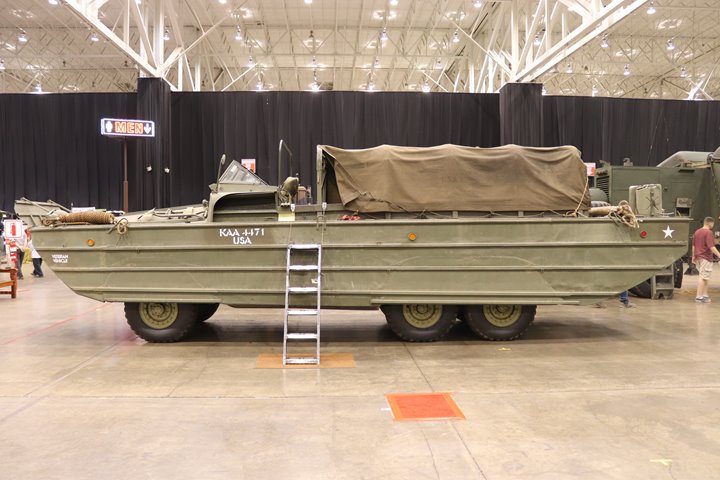
The ladder allowed the spectators to take a
look inside the cockpit of the DUKW.
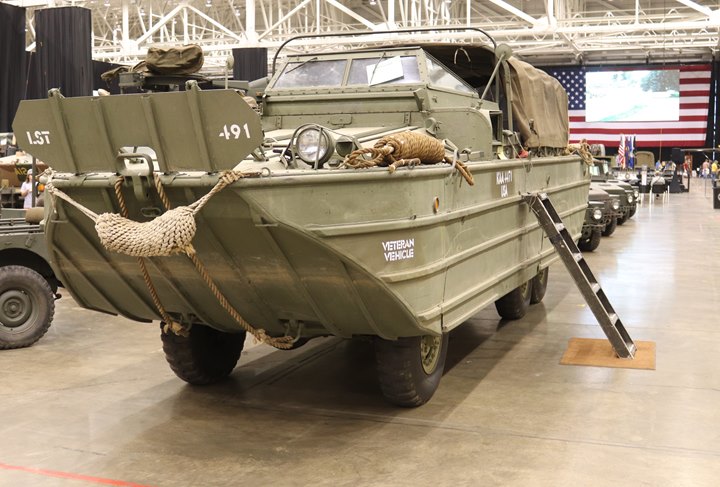
But first a quick inspection of the exterior
is in order.
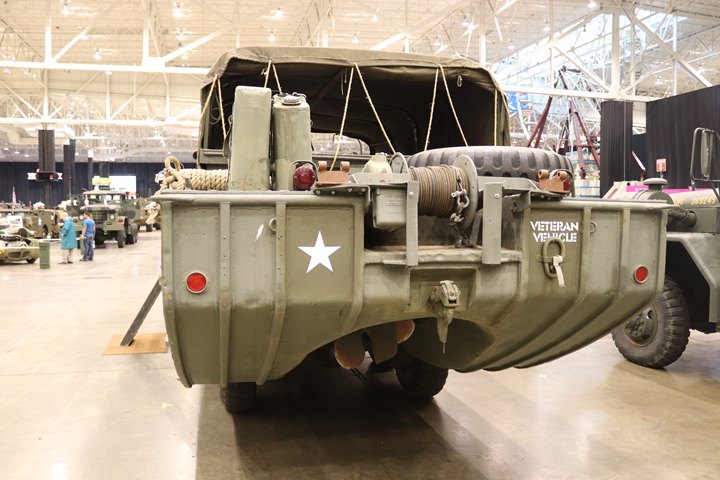
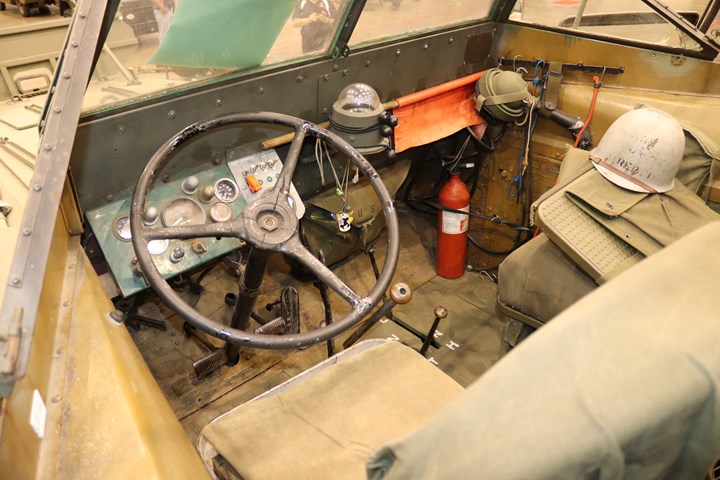
This cockpit has a compass in it.
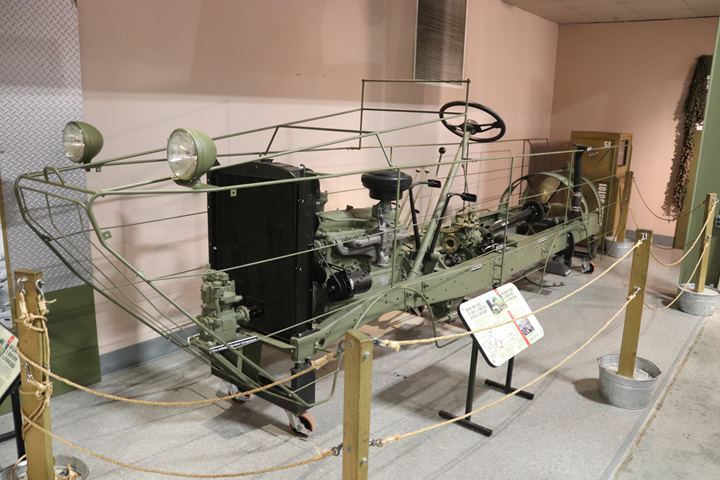
This is a very cool space-frame
display of the DUKW at the Wright Museum of WWII, Wolfeboro, NH.
The frame rails have been pulled in to the width of the drivetrain so
the visitor can see the inner workings of the DUKW. This unique
display is one of the best of many good exhibits at the Wright Museum.
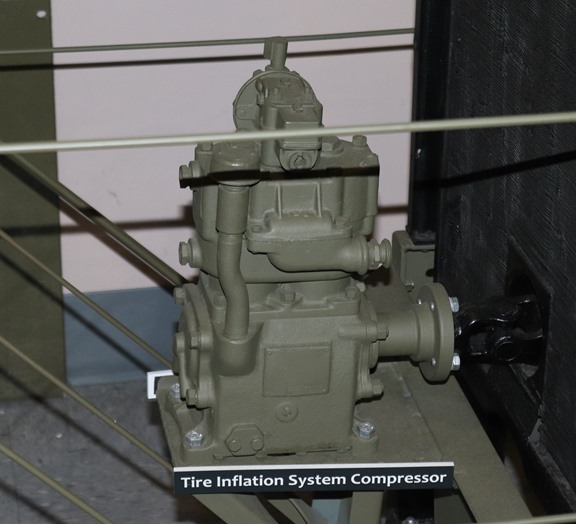
Ahead of the radiator is the location of the
compressor for inflating the tires. The driveshaft to run the
compressor comes through a slot in the radiator.
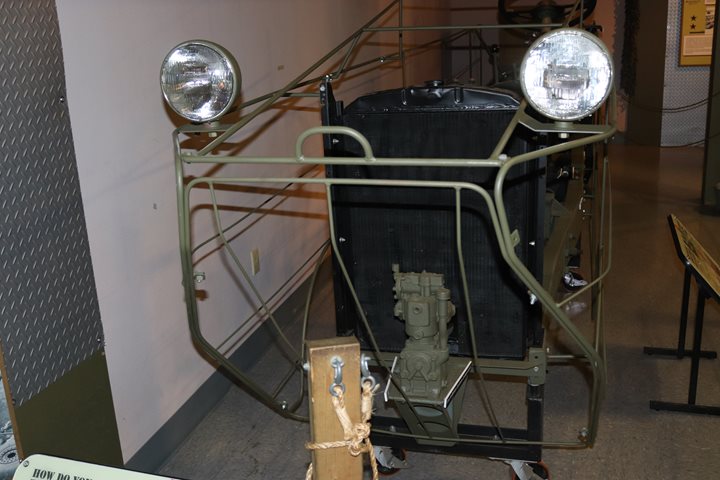
Another view of the compressor.
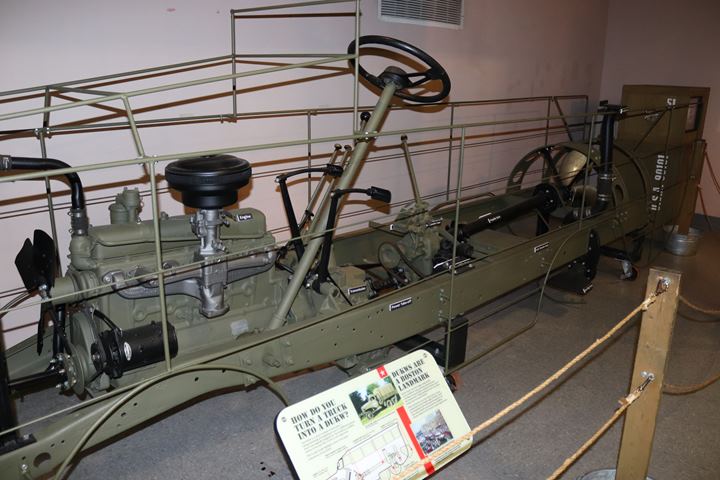
The driveshaft for the air compressor comes
off the crankshaft through the timing chain cover.
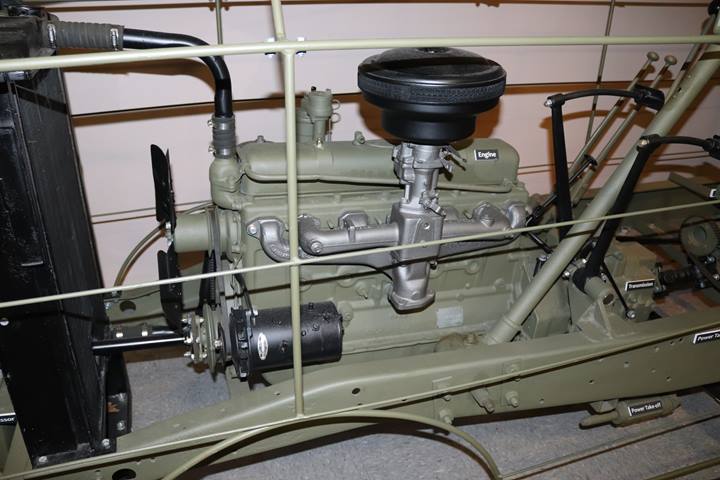
The GMC 270 six-cylinder engine provided 91
hp. Delco-Remy Division of General Motors furnished the DC
generator seen here along with the starter, distributor, and ignition
coil for all of the DUKWs. Pontiac Motor Division of General
Motors was casting the blocks for the GMC 270 engine in its nearby
plant.
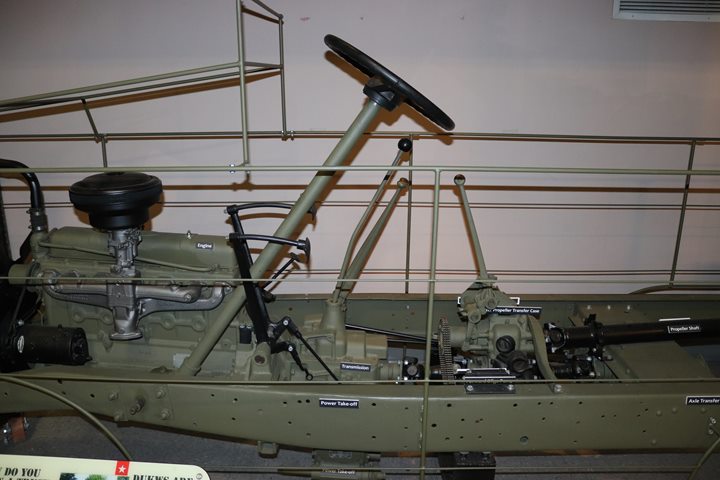
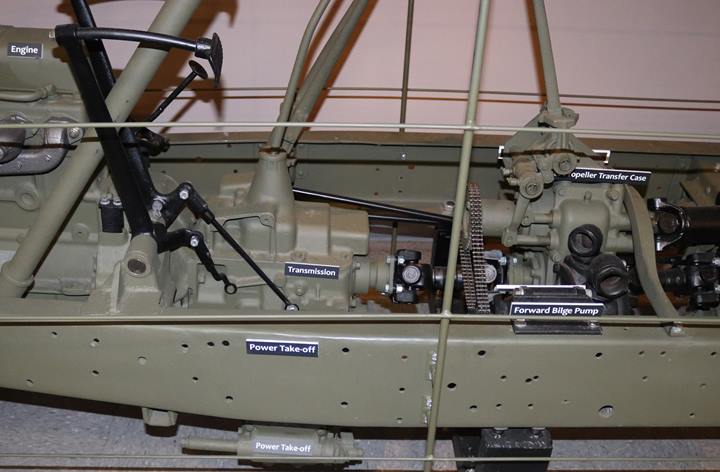
The Clark Equipment Company provided its 204-VO 5-speed
transmission for both the GMC DUKW and the CCKW.
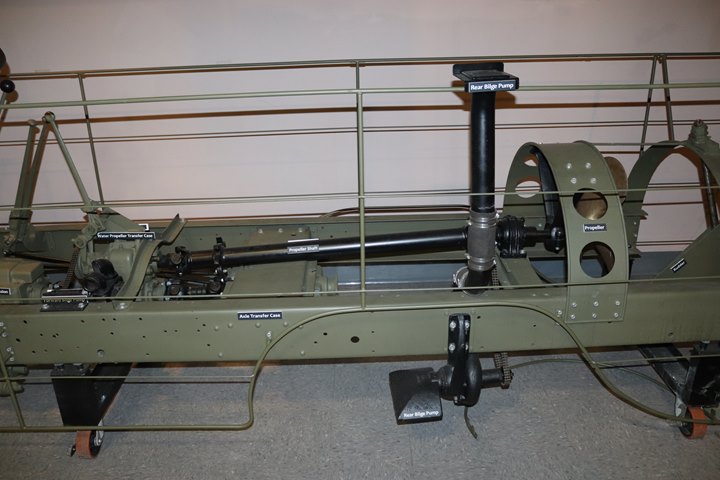
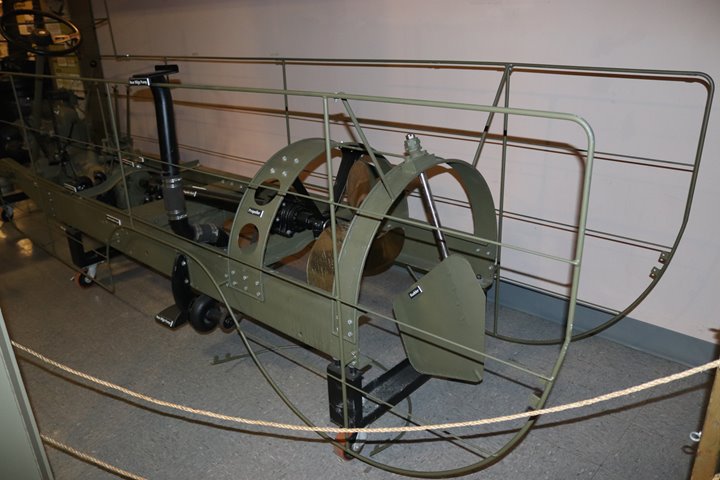
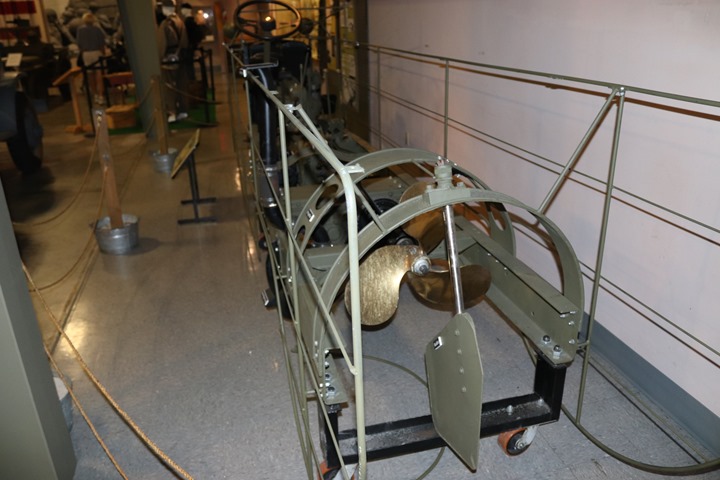
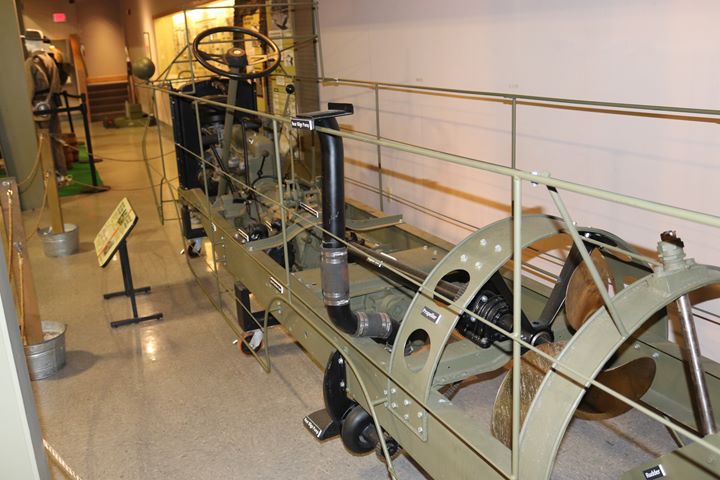
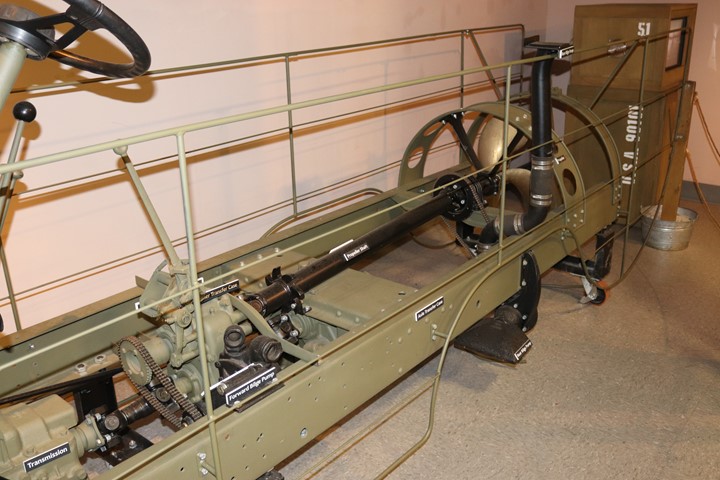
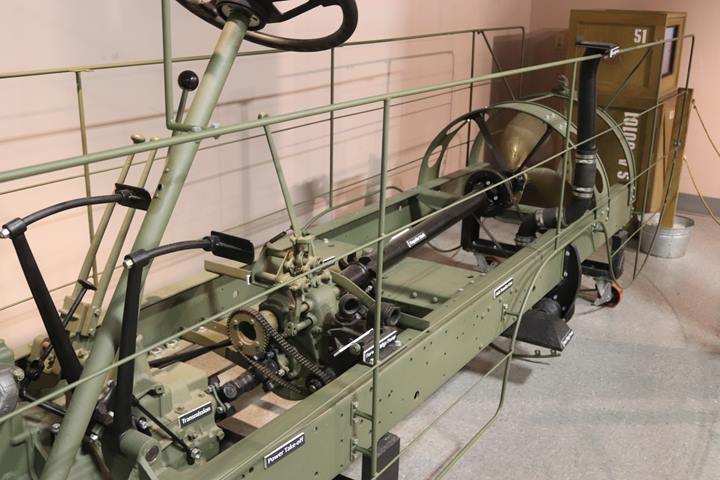
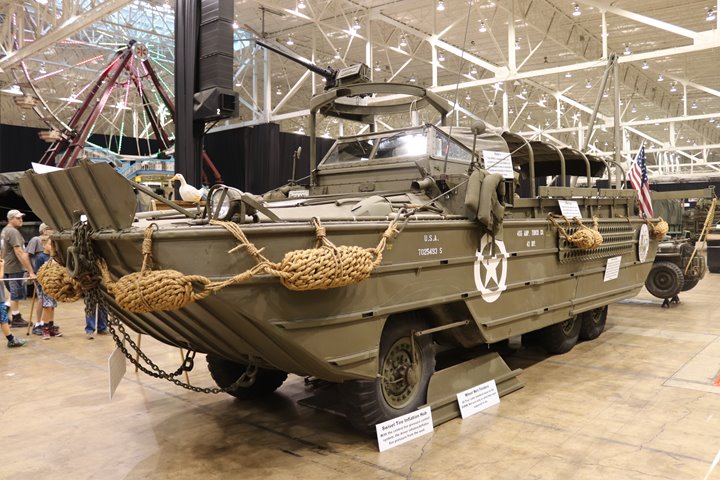
This DUKW was also at the National Military
Vehicle Preservation Convention in Cleveland, OH in June 2017. It
is the most complete DUKW I have seen. To make it even better, the
owner put information boards on and around his display to explain the
various parts of the vehicle.
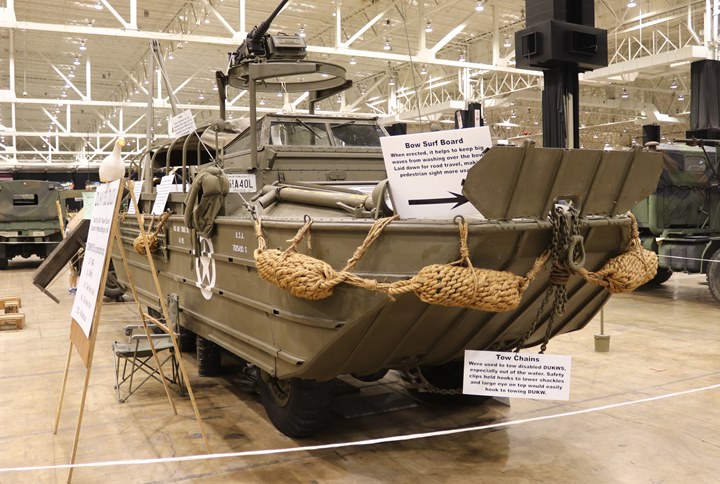
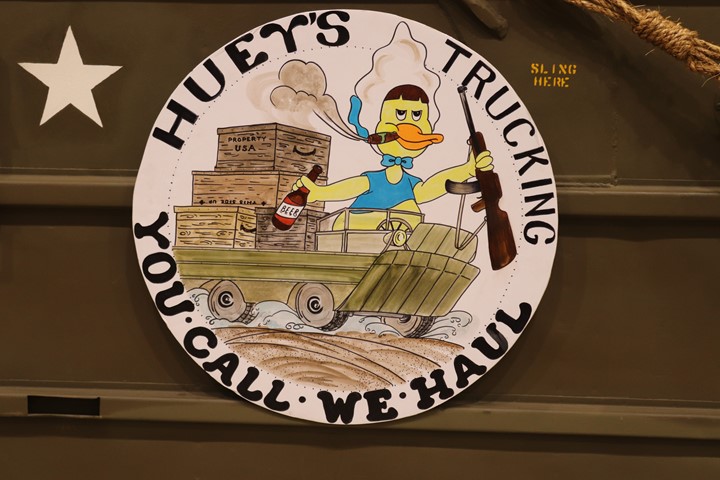
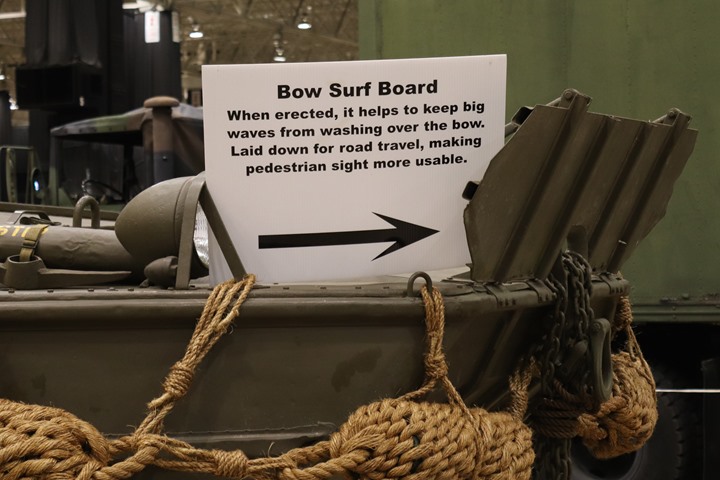
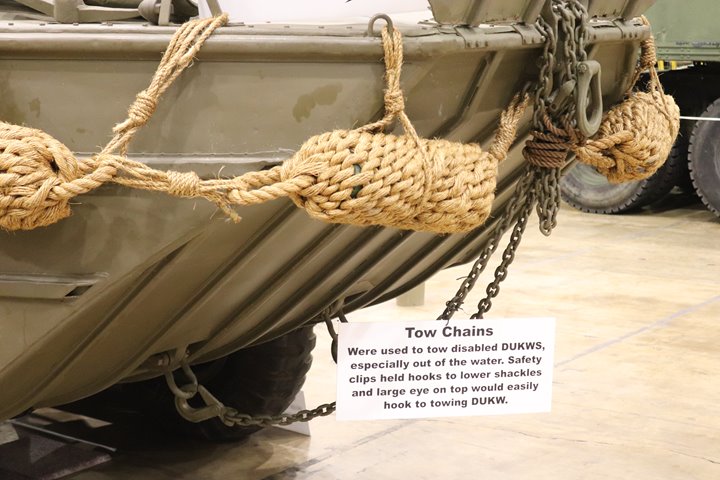
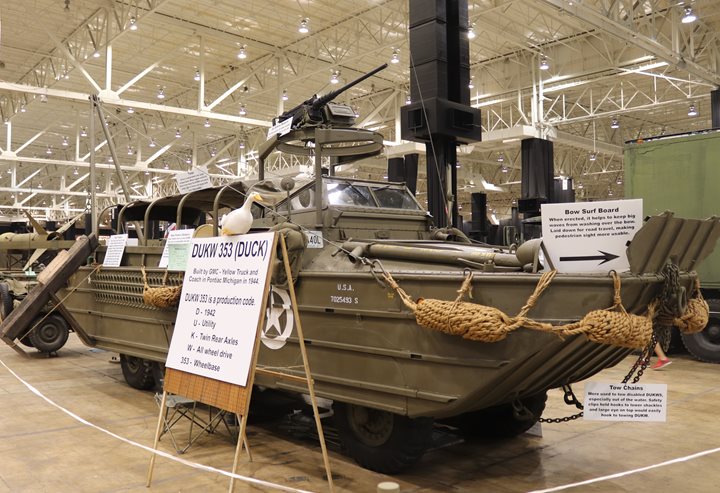
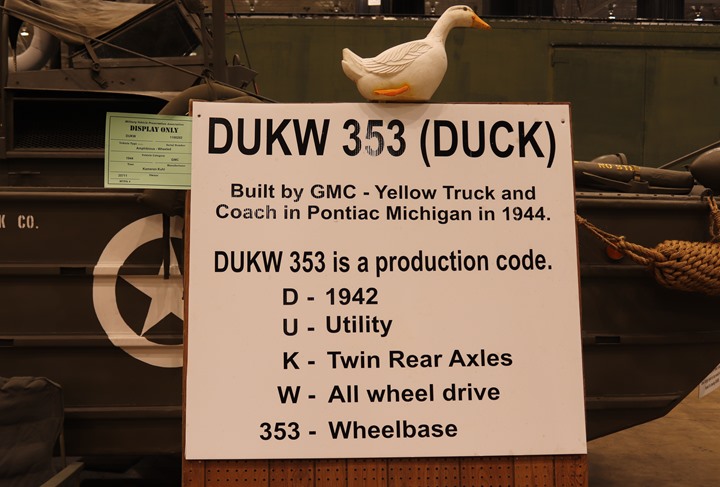
The wheelbase is in inches.
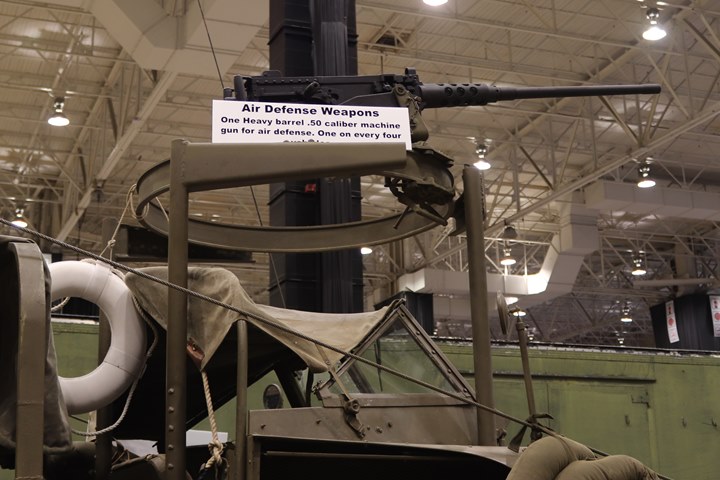
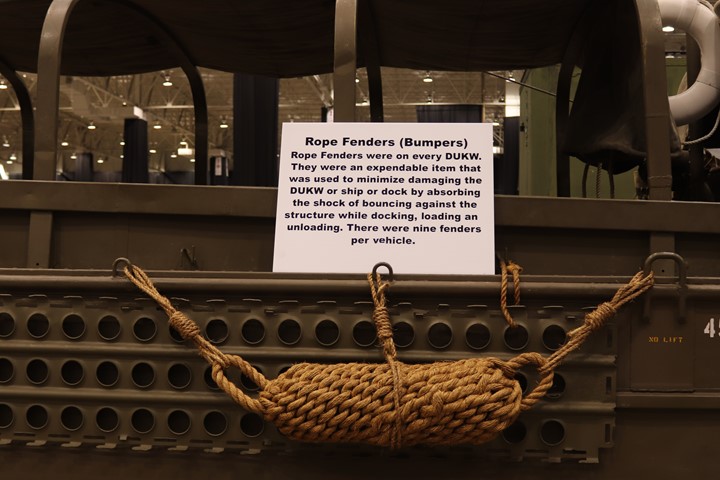
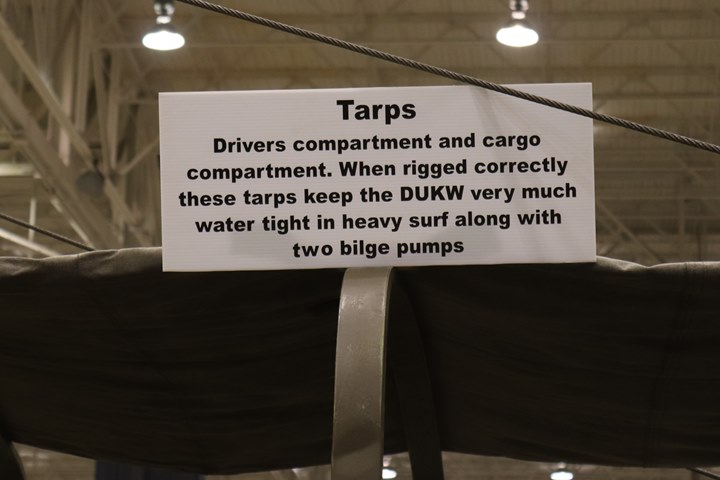
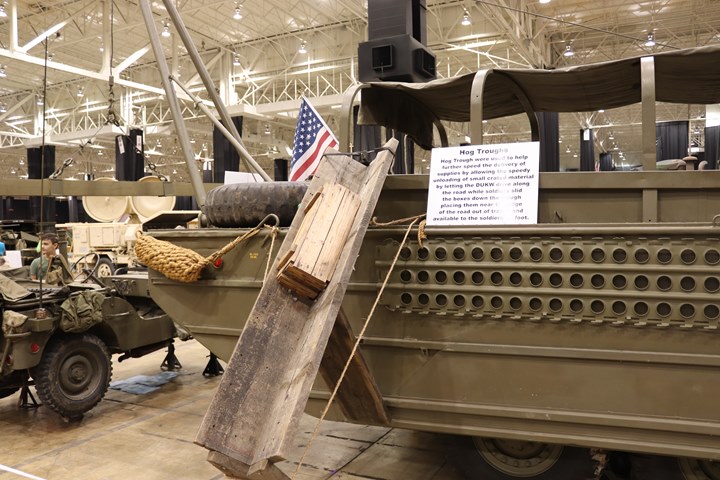
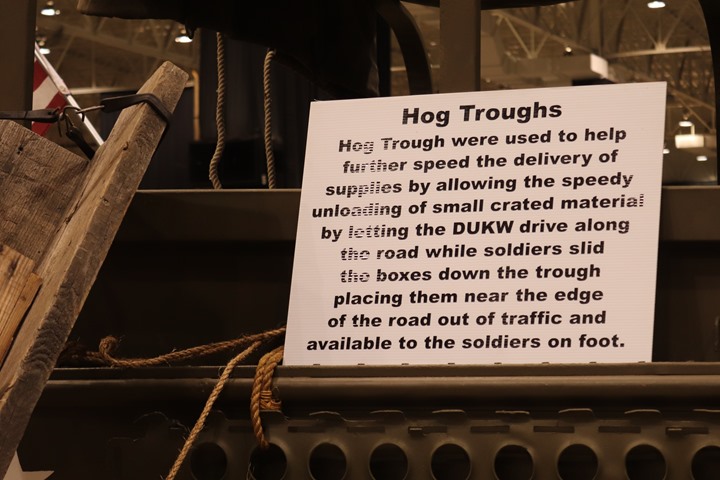
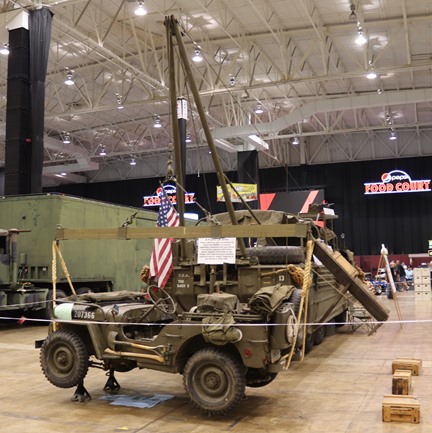
Note the boxes of supplies that the DUKW has
dropped out of the hog trough as described above.
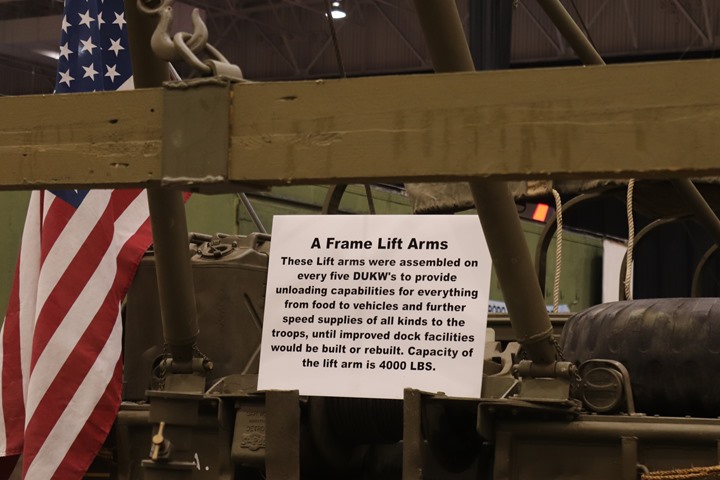
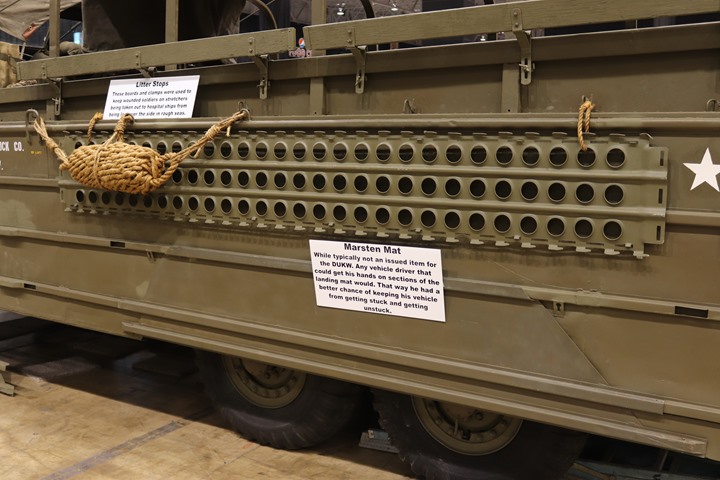
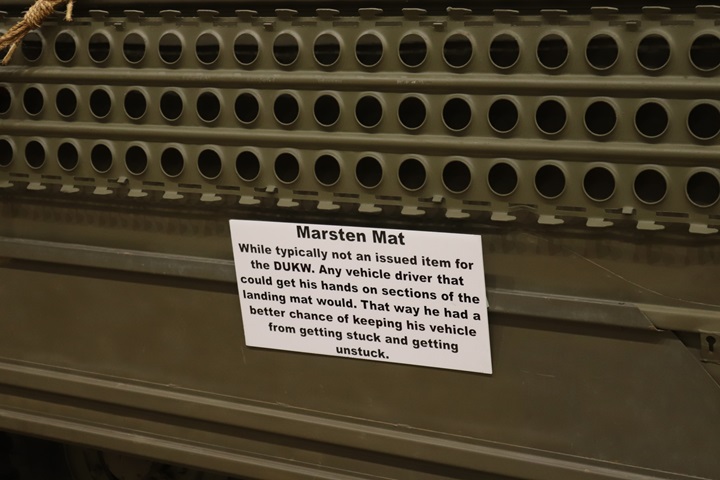
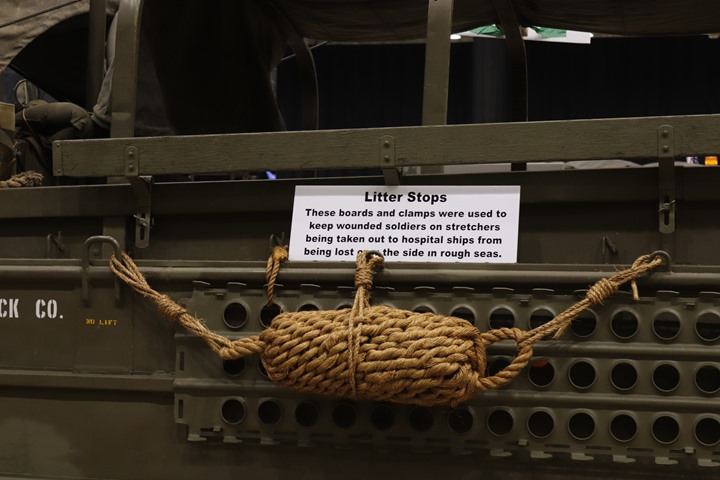
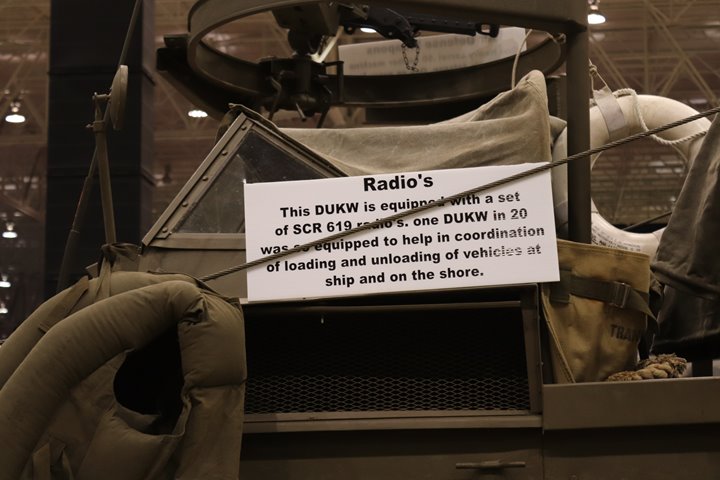
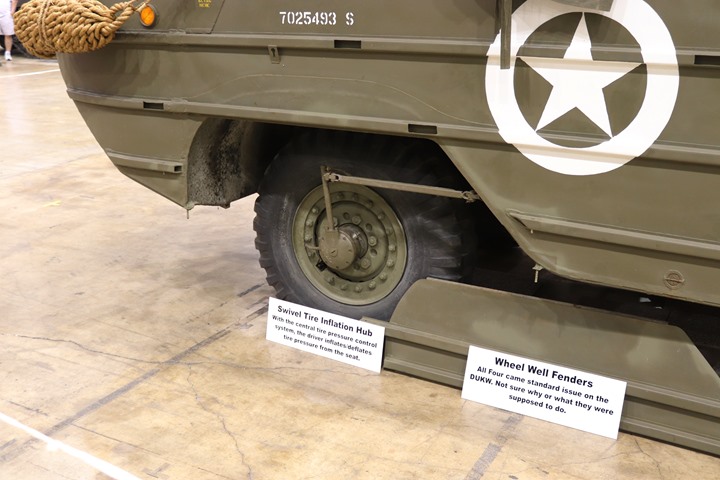
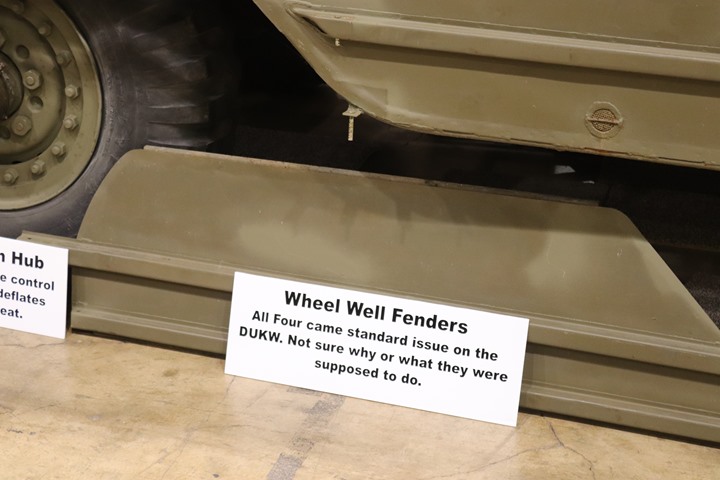
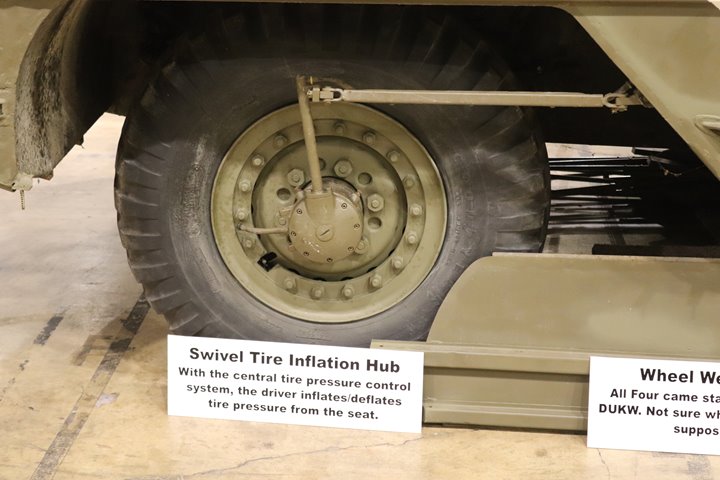
In the previous set of photos from the
Wright World War Two Museum, we saw that the air compressor for the tire
inflation system was ahead of the radiator.
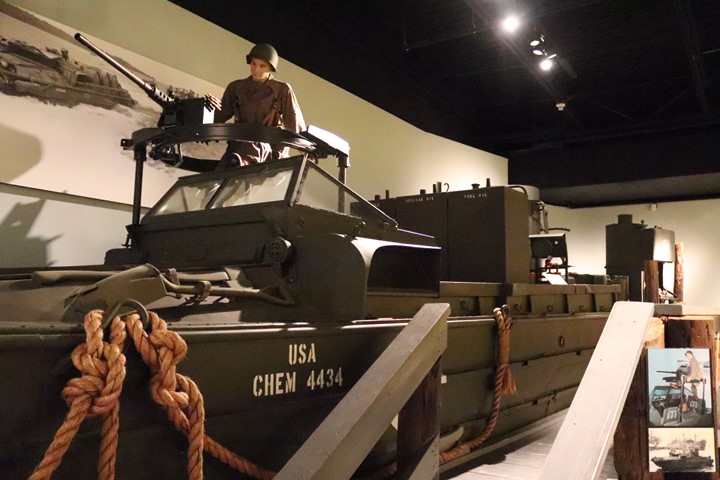
This last set of photos was taken at the
U.S. Army Chemical Corps Museum at Fort Leonard Wood, MO. During
World War Two, the Army Chemical Corps used the DUKW to generate smoke
screens during amphibious operations. This is a one-of-kind and
unique display.
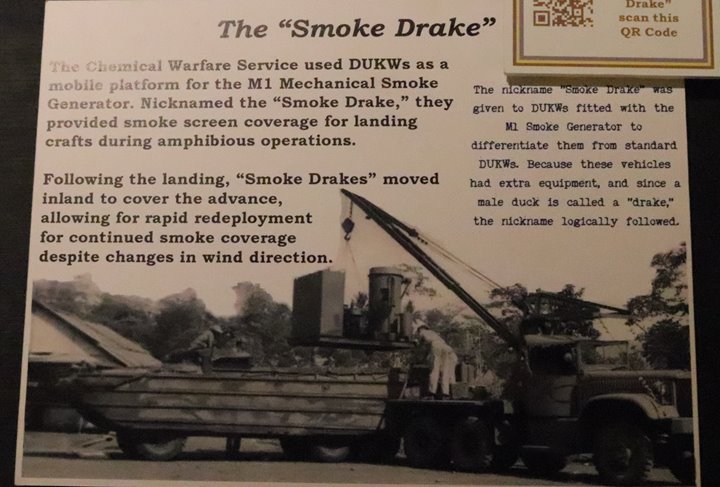
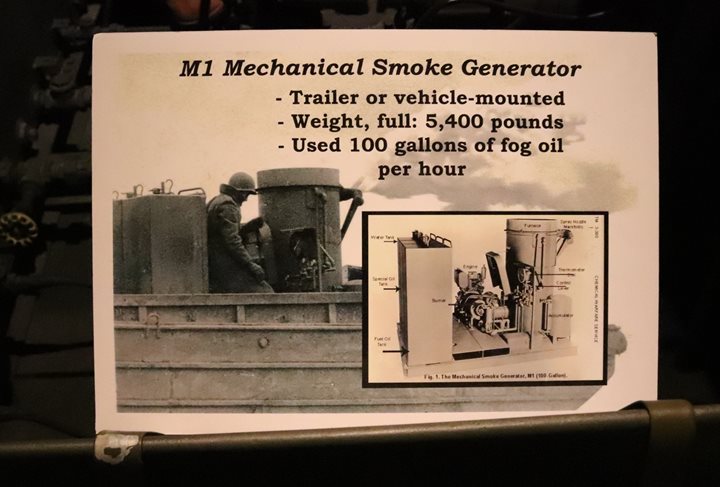
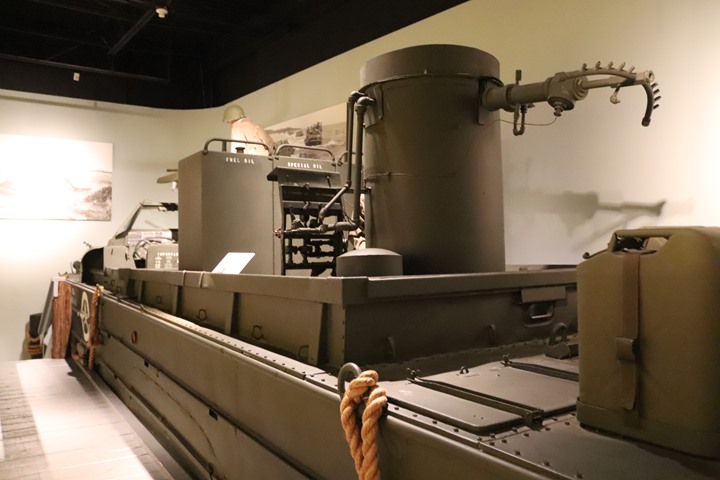
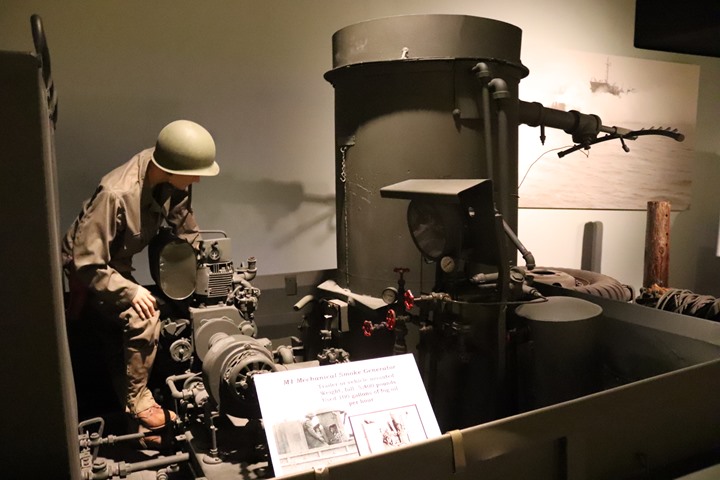

The next photos show the markings and the
different information placards that came on the DUKW. This is the
most complete set of these I have seen.
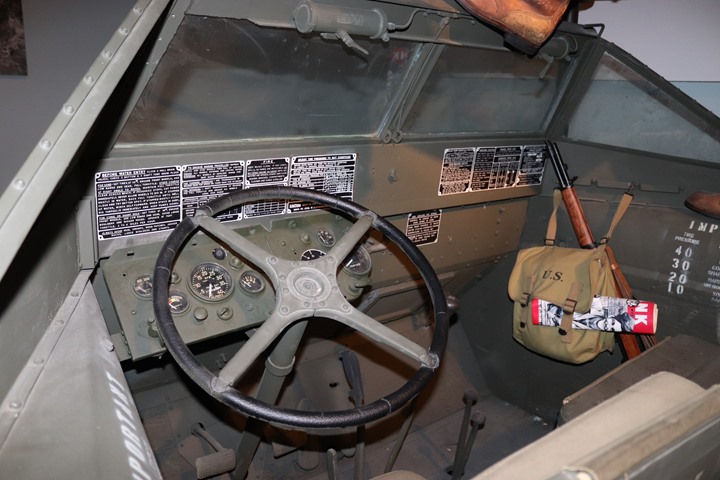
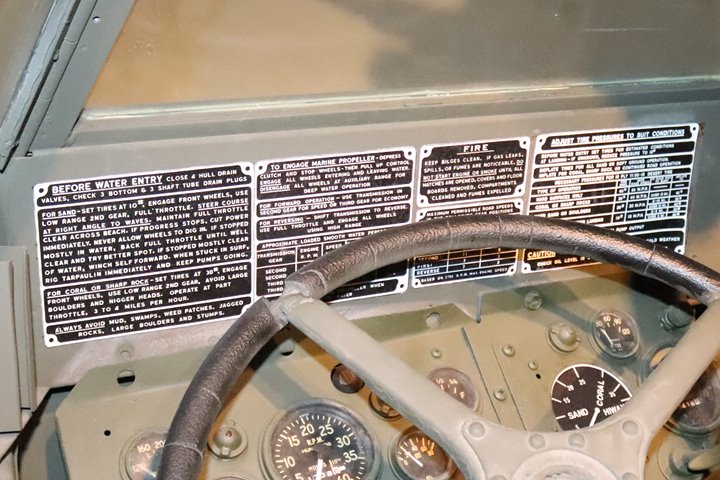
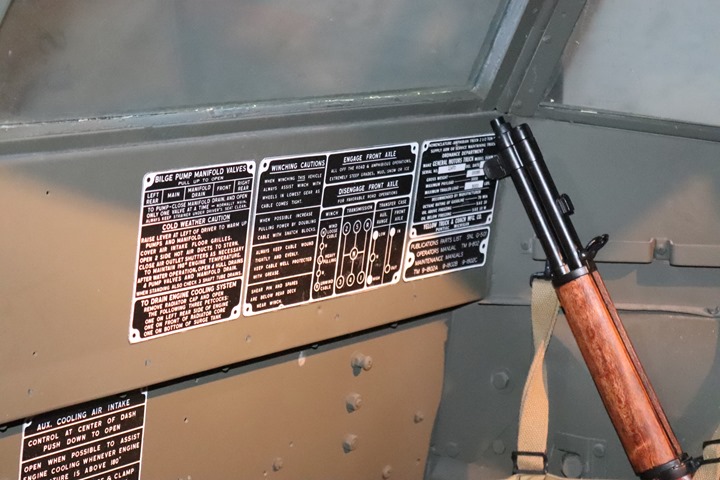
|














































